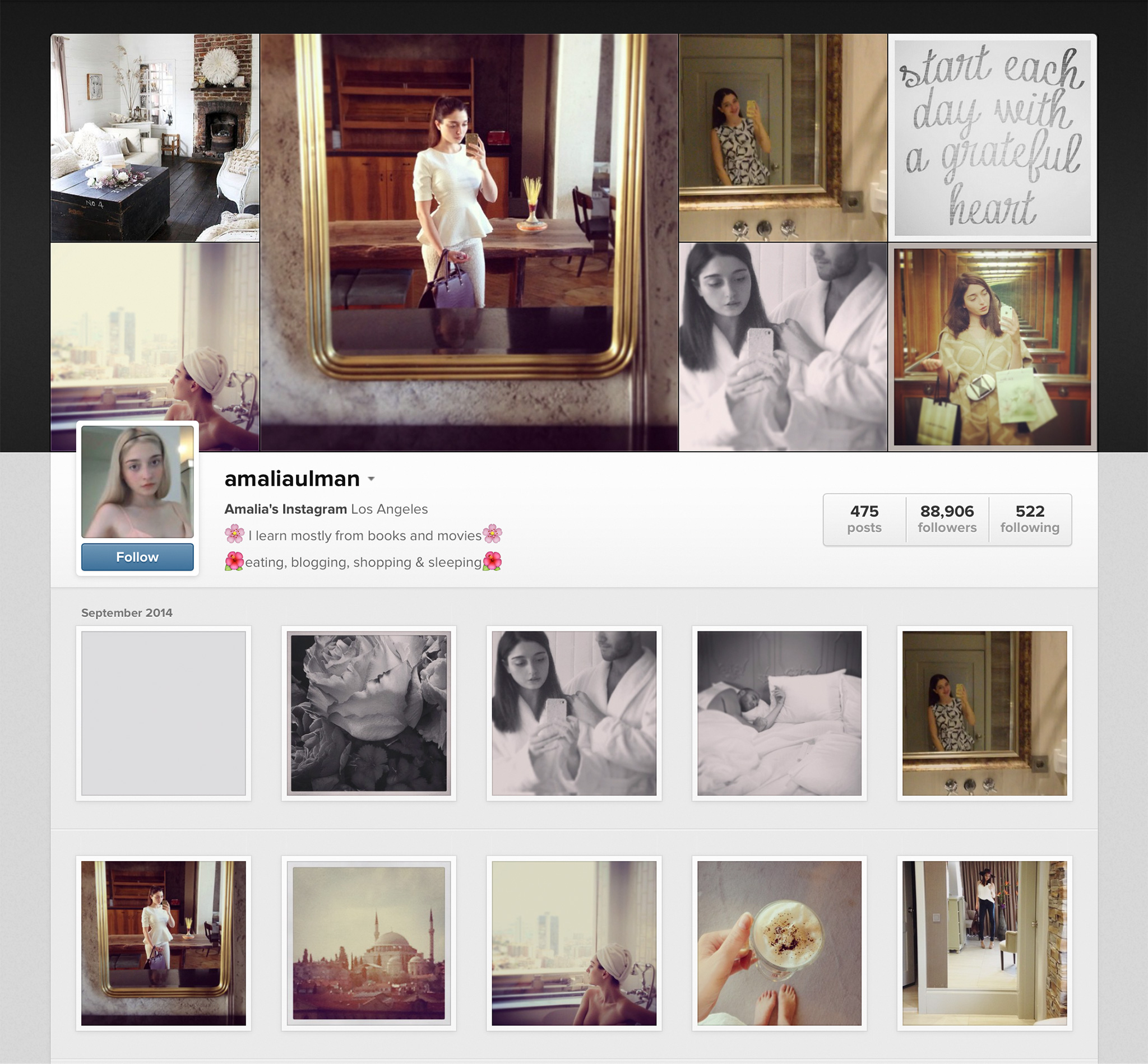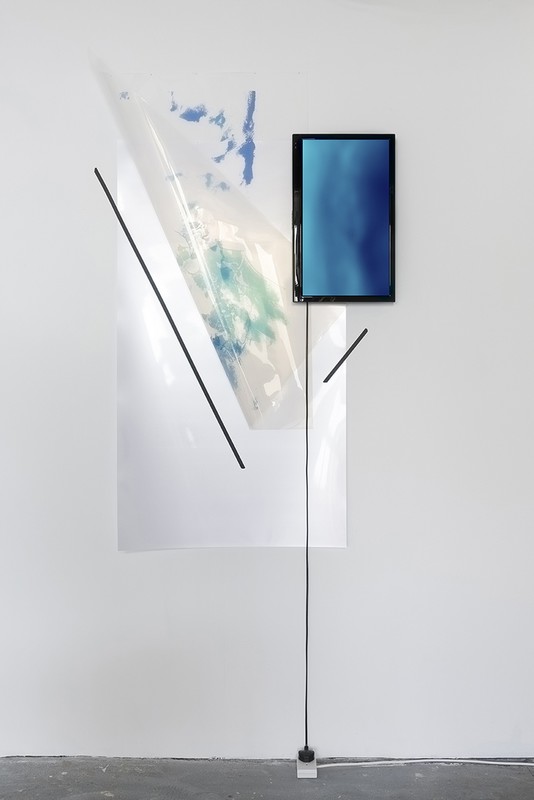Lele Buonerba is a graphic designer based in Chicago, working in the contemporary art industry.
Contemporary Art and Social Media
February 2017 • File under: Contemporary Art
Nowadays art can be with us at any time and in any place, offering fresh perspectives, raising new questions and adding a spark of curiosity to our daily routines. Through Facebook, Instagram, Twitter and Pinterest, an increasing number of people can enjoy art and find out about exhibitions happening all around the world. Recent surveys show that an ever-growing percentage of the general public discovers art primarily through social media, rather than by visiting museums and galleries, especially amongst younger demographics. But how is social media influencing the contemporary art world, and which art forms are artists shaping to interpret contemporary cultural and social trends?
Instagram is arguably the most important social network for contemporary art today, and it stands out as a key case-study to understand the digital wave that is shaking the art world. Launched in 2010, the image-sharing platform now counts over 600 million active users. As recent studies have shown, Instagram’s incredible success is due to people’s need for “interaction, archiving, self-expression, escapism and peeking”, – this makes it clear why the visually-driven platform seems to be art enthusiasts’ favourite place to share artworks, and it is also becoming a legitimate contemporary art medium of its own.
Contemporary artists who are using social media in their work
In 2014 Argentinian-born artist Amalia Ulman used her Instagram account (@amaliaulman) as the backdrop for a new kind of performance art, in which she underwent an extreme, semi-fictionalised makeover. Mimicking the poses, lifestyle and aesthetics of the photo sharing platform’s infamous “hot babe”, Ulman conceived her Excellences & Perfections performance as a “boycott” of her own online persona. Last year Tate Modern included Ulman’s work in the exhibition Performing for the Camera, which examined the relationship between photography and performance. This controversial curatorial choice stirred up a discussion about the place of social media art in galleries and museums. As a nascent art vehicle, social-media-based art still has a long way to go before the establishment recognises its value, but it has potential to make art more accessible to a new generation of buyers.
 Screenshot of Amalia Ulman’s Instagram project Excellences & Perfections as preserved by Rhizome, a nonprofit organization affiliated with the New Museum. You can view the archived profile here.
Screenshot of Amalia Ulman’s Instagram project Excellences & Perfections as preserved by Rhizome, a nonprofit organization affiliated with the New Museum. You can view the archived profile here.Just days after Amalia Ulman ended her three-month-long Instagram performance in late 2014, Gagosian Gallery presented an exhibition of American artist Richard Prince’s new work. The show, entitled New Portraits, consisted of thirty-seven Instagram screenshots featuring Prince’s own candid, sleazy and somewhat offensive comments, which were blown up and printed on canvas. The work was criticised for showing (and subsequently selling) images that Prince reproduced without the creators’ consent. Controversy and appropriation have always been Prince’s game, but he had never directly engaged the images’ subjects. By reproducing and communicating with Instagram posts and their subjects, Prince’s New Portraits establish a more intimate take on the kind of work that he’s known for.
Challenging the boundaries of the digital realm, Italian artist Marco Strappato has developed a multidisciplinary practice that uses the endless flux of images circulating through social media. In his sculptural work Untitled (Atmosphere/Chemistry/Ozone/Yearly concentration + Ocean/Chemistry/Dissolved Oxygen/5000 meters/Seasonal percentage), 2015, Strappato has manipulated and reframed images from the web, in order to readjust our perception of two-dimensionality and question the construction of images and how our society relates to the media. By investigating emotional and psychological responses of viewers to the images, the artist invites us to critically reassess the common understanding of image production and image distribution.

Marco Strappato, Untitled (Atmosphere/Chemistry/Ozone/Yearly concentration + Ocean/Chemistry/Dissolved Oxygen/5000 meters/Seasonal percentage), 2015. Courtesy the artist.
The role of social media in contemporary art collecting
Furthermore, while artists are commenting on contemporary culture through its own resourceful means of expression, a concurrent shift from physical to digital venues is taking place for artist discovery. Therefore, Instagram and other social networks are also changing the way collectors buy artworks, as online purchases account for an increasing amount of transactions. And since a large portion of the market now lives online, it’s increasingly important for contemporary art galleries to successfully engage with collectors through digital means. On top of being a great way for artists, institutions and galleries to improve outreach and audience engagement, the effective use of social media is becoming an invaluable marketing tool to engage with new audiences and create new sales channels.
While many museums and galleries are steadily increasing their social media presence and contemporary artists are starting to work with and within social networks, there still has not been truly disruptive change in the industry. Instagram has recently introduced ‘shoppable tags’, a non-invasive way for brands to sell their products directly through the app. Although in-person conversations and relationships are a key part of selling art, if galleries are able to communicate more effectively through social media and ordering art through online marketplaces proves itself better than email exchanges, the number of purely digital sales of art are bound to grow. One-tap purchases on Instagram might not be a viable way for galleries to sell artworks, but similar processes are already changing consumer behaviour across every industry.
As contemporary art galleries struggle to keep their brick-and-mortar locations afloat, the growing usage of social media and online marketplaces could allow for online art sales to become a sustainable business model in support of galleries’ traditional operations. In the same way that contemporary artists are making use of social media, either to showcase their work and process, or to host new forms of art, galleries can utilise similar sets of strategies to increment their audience and support artists. Finally, as more artists further develop social media art, perhaps the social media accounts of galleries and museums will become new venues for contemporary artists.
Originally published by Artvisor.